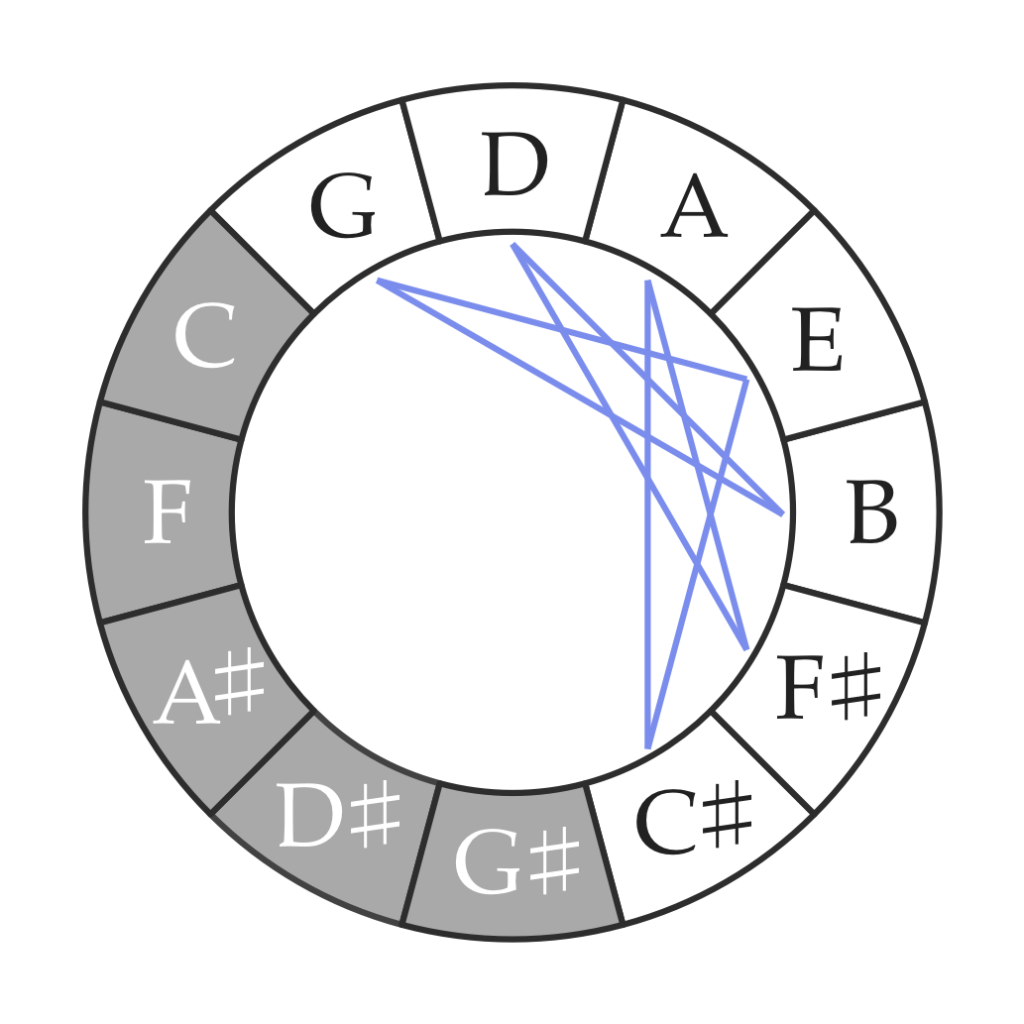Hey guys! I just need some help understanding this please... The minor scale is based off of the 6th note of the major. So for C maj, its A, I get that. But the C minor scales root is not A. Any help is very much appreciated!
You're not far adrift - the 6th note of the C major scale is A, and A minor is the relative minor to C
Starting from C minor you have to work backwards - C is the 6th note of the Eb major scale
"Be good at what you can do" - Fingerbanger"
I have always felt that it is better to do what is beautiful than what is 'right'" - Eliot Fisk
Wedding music and guitar lessons in Essex. Listen at: http://www.rollmopmusic.co.uk
Idk if posting links will get me in trouble. This is a circle of fifths. Check out the C major and Eb Major. Hopefully this helps!!
~Yours Troubadorly,
http://www.sergiopaulomusic.com
Thank you guys!
Fully! There's a lot of rad stuff in that circle of fifths. Spend some time on it. Youtube it. It's legit! :)
~Yours Troubadorly,
http://www.sergiopaulomusic.com
Really the way to understand this is to first understand the scales and how they relate to notes and tones.
A scale is an ordering of notes across one octave. The starting note of the octave for the purpose of ordering the scale is called the root.
The one subtlety here is that it is an ordering of notes and not tones. For example, C# and Db are the same tone(1) but not the same note. The distance between notes is measured in "steps." A "half step" is one key on the piano or one fret on the guitar. A "whole step" is 2 keys (including the black keys) on a piano or 2 frets on a guitar.
If two scales contain the same notes(2) but in different orders (that is with different roots), we say those scales are related.
From the open string, a distance of one octave is 12 half steps. In order to get 8 notes into an octave requires a mixture of step distances as 12/8 is not a whole number.
The major scale is an 8 note scale (an ordering of notes across one octave) that has a very specific pattern. That pattern the starting note, or root, in steps, is: whole, whole, half, whole, whole, whole, half.
Going through all the available starting notes, there are 15 possible major scales. This is because we are focused on notes, not tones. The 2nd fret on the first string is both F# and Gb, and the scale for each of those notes is different even though the tones will be the same. This is what is meant by the term "enharmonic," two different notes with the same tone.
The natural minor scales is a completely different scale that has a different specific pattern. The minor scale's step pattern from its root is: whole, half, whole, whole, half, whole, whole.
There are other minor scales that have different patterns, but we'll ignore those for this discussion as some of them have different step patterns depending on which direction one is playing (ascending or descending) or which don't relate perfectly to a major scale.
Now, the reason a relative minor scale has the same notes as its relative major scale is simply because if you start the minor pattern at the 6th note of the major scale, the step patterns line up.
But, because there are 15 possible scales, 12 half steps in an octave, and only 8 notes for each major or minor scale, the relationship is not symmetrical. The 6th note of the major scale happens to be the root of its relative (natural) minor. The 3rd note of the natural minor scale is the root of its relative major scale.
(1) Well, in just intonation they're the same tone. But not all instruments at all times are in just intonation, so there are cases where this isn't the case, which is one of the big historical reasons why scales are about notes and not tones!
(2) or are in the same key signature, but that's slightly more complicated.
"The music business is a cruel and shallow money trench, a long plastic hallway where thieves and pimps run free, and good men die like dogs. There's also a negative side." -- HST
Hey guys! I just need some help understanding this please... The minor scale is based off of the 6th note of the major. So for C maj, its A, I get that. But the C minor scales root is not A. Any help is very much appreciated!
I would say the root is A, but if it is not, you switched modes.
Alan may be exactly right. It depends if you want Mixolydian
or Dorian. What I think KP is talking about is perfect key.
You might be able to rock this back a tic.
It has a very 'Major Oriented' type of sound.

This is a bit more than I usually use, but it omits some important scales
https://en.wikipedia.org/wiki/List_of_musical_scales_and_modes
Something nice that should not require much thought:
https://www.youtube.com/watch?v=mSvqVL3m6yk
Ilene is good.
https://www.youtube.com/watch?v=6dMrE9pyupQ


